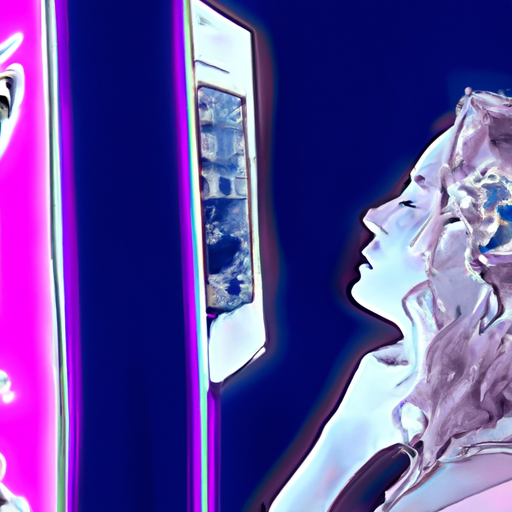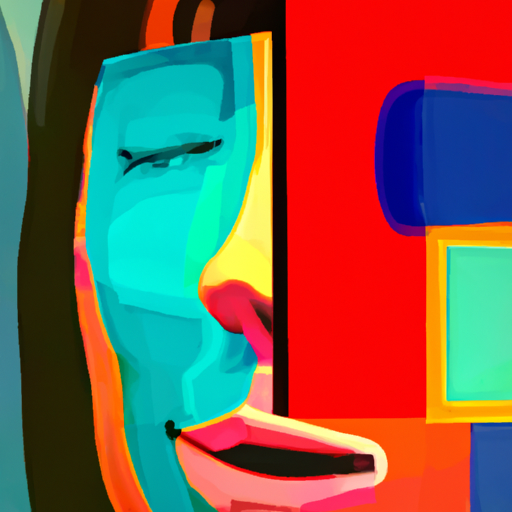
-
Table of Contents
- Exploring Abstract Art Elements in Graphic Design
- Understanding Abstract Art
- Elements of Abstract Art
- 1. Shapes and Forms
- 2. Colors
- 3. Lines and Textures
- Case Studies: Abstract Art in Graphic Design
- 1. Nike Air Max Campaign
- 2. Spotify’s Year in Music
- Statistics: The Impact of Abstract Art in Graphic Design
- Summary
Exploring Abstract Art Elements in Graphic Design

Abstract art is a fascinating and versatile form of artistic expression that has found its way into various fields, including graphic design. By incorporating abstract art elements into their designs, graphic designers can create visually striking and unique compositions that captivate audiences. In this article, we will delve into the world of abstract art and explore how its elements can be effectively utilized in graphic design.
Understanding Abstract Art
Abstract art is characterized by its departure from realistic representation and the emphasis on shapes, colors, forms, and gestural marks. It is a visual language that communicates emotions, ideas, and concepts through non-representational means. While abstract art can be subjective and open to interpretation, it often evokes a sense of mystery, curiosity, and intrigue.
Abstract art can be traced back to the early 20th century, with pioneers such as Wassily Kandinsky, Piet Mondrian, and Kazimir Malevich pushing the boundaries of traditional art forms. Their exploration of abstraction laid the foundation for future artists and designers to experiment with non-representational elements.
Elements of Abstract Art
When it comes to incorporating abstract art elements into graphic design, several key elements can be utilized to create visually compelling compositions. Let’s explore these elements in detail:
1. Shapes and Forms
Shapes and forms are fundamental building blocks of abstract art. They can be geometric, organic, or a combination of both. Graphic designers can use shapes and forms to create visual interest, convey meaning, and establish a sense of balance or tension within a composition.
For example, a graphic designer working on a poster for a music festival might use abstract shapes and forms to represent different genres of music. By using bold and dynamic shapes, they can visually communicate the energy and excitement of the event.
2. Colors
Colors play a crucial role in abstract art and graphic design alike. They evoke emotions, set the mood, and create visual impact. In abstract art, colors are often used in unconventional ways, breaking free from the constraints of realistic representation.
Graphic designers can leverage the power of colors to create visually striking compositions. They can experiment with vibrant and contrasting color palettes to grab attention or use subtle and harmonious color schemes to evoke a sense of calmness and sophistication.
3. Lines and Textures
Lines and textures add depth, movement, and visual interest to abstract art and graphic design. They can be smooth, rough, straight, curved, or a combination of various line types. Textures, on the other hand, can be created digitally or by incorporating real-world textures into the design.
Graphic designers can use lines and textures to guide the viewer’s eye, create a sense of rhythm, or add a tactile quality to their designs. For instance, a designer working on a website for a fashion brand might use abstract lines and textures to mimic the feel of different fabrics, enhancing the overall user experience.
Case Studies: Abstract Art in Graphic Design
Let’s take a look at some real-world examples of how abstract art elements have been successfully incorporated into graphic design:
1. Nike Air Max Campaign
In 2019, Nike launched a campaign for their iconic Air Max sneakers, collaborating with various artists to create abstract art-inspired designs. The campaign featured bold and vibrant colors, dynamic shapes, and energetic lines, capturing the essence of the Air Max brand.
The abstract art elements used in the campaign not only appealed to the target audience but also conveyed a sense of movement and innovation, aligning with the brand’s values. The campaign received widespread acclaim and helped solidify Nike’s position as a leader in the sneaker industry.
2. Spotify’s Year in Music
Every year, Spotify releases a “Year in Music” campaign that showcases users’ listening habits and highlights the most popular songs and artists. In 2018, Spotify collaborated with graphic designer and artist Mario Klingemann to create abstract art-inspired visuals for the campaign.
Klingemann used algorithms to generate abstract patterns and shapes based on the data collected from Spotify users. The resulting visuals were a mesmerizing blend of colors, forms, and textures, representing the diversity and richness of music.
Statistics: The Impact of Abstract Art in Graphic Design
The incorporation of abstract art elements in graphic design has proven to be a powerful tool for brands and businesses. Here are some statistics that highlight the impact of abstract art in the design industry:
- According to a study by Adobe, 73% of companies prioritize design to differentiate themselves from competitors.
- Research conducted by the Design Management Institute shows that design-driven companies outperformed the S&P 500 index by 219% over a 10-year period.
- A survey by McKinsey & Company found that companies that prioritize design achieve higher customer satisfaction and increased market share.
These statistics demonstrate the value of incorporating abstract art elements in graphic design to create visually appealing and memorable brand experiences.
Summary
Abstract art elements offer graphic designers a powerful means of creating visually striking and unique compositions. By understanding and utilizing shapes, colors, lines, and textures, designers can captivate audiences and convey emotions, ideas, and concepts in a non-representational manner.
Real-world case studies, such as Nike’s Air Max campaign and Spotify’s Year in Music, demonstrate the successful integration of abstract art elements in graphic design. These examples showcase how abstract art can enhance brand identity, engage audiences, and create memorable experiences.
As the design industry continues to evolve, the incorporation of abstract art elements in graphic design will likely become even more prevalent. By embracing the versatility and expressive nature of abstract art, designers can push the boundaries of creativity and create impactful visual experiences for brands and businesses.
